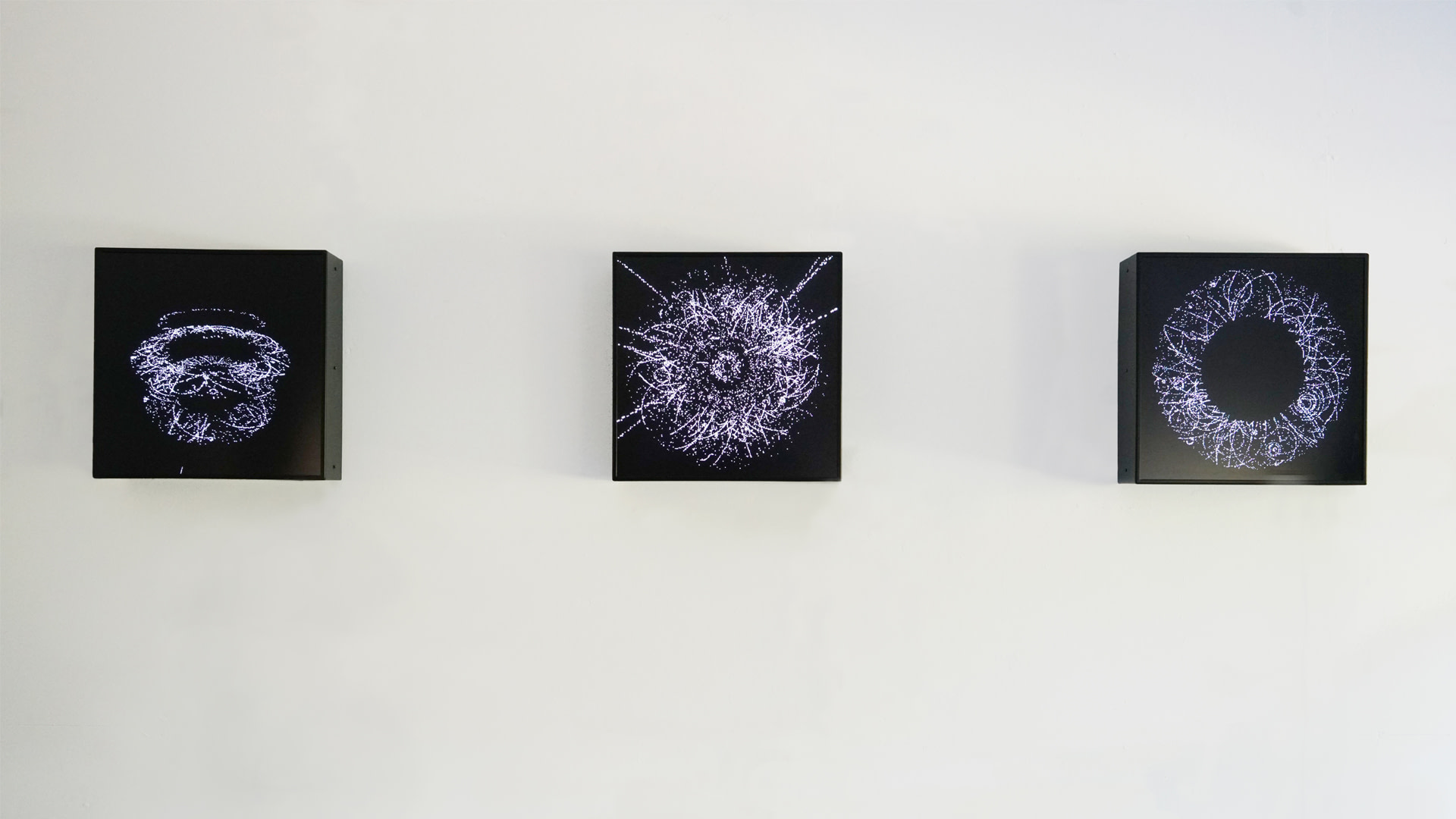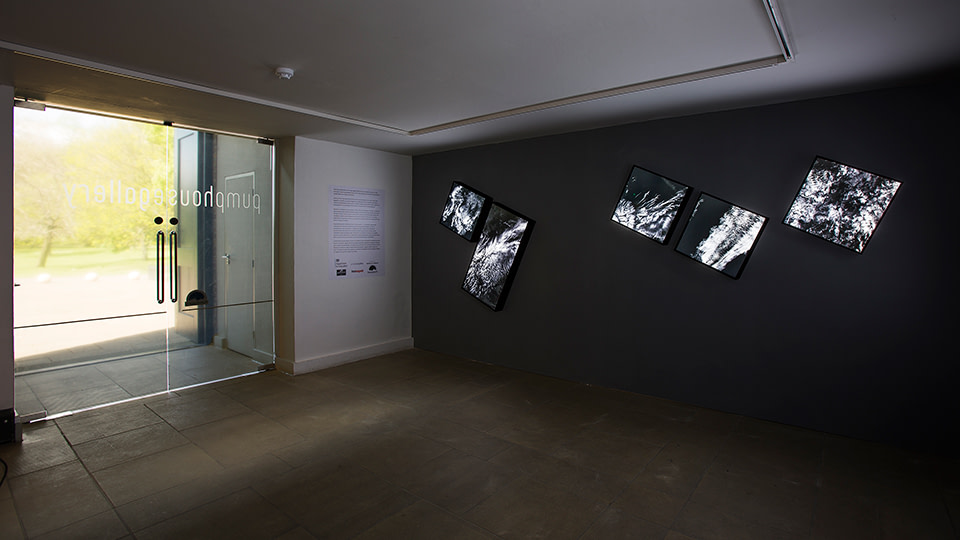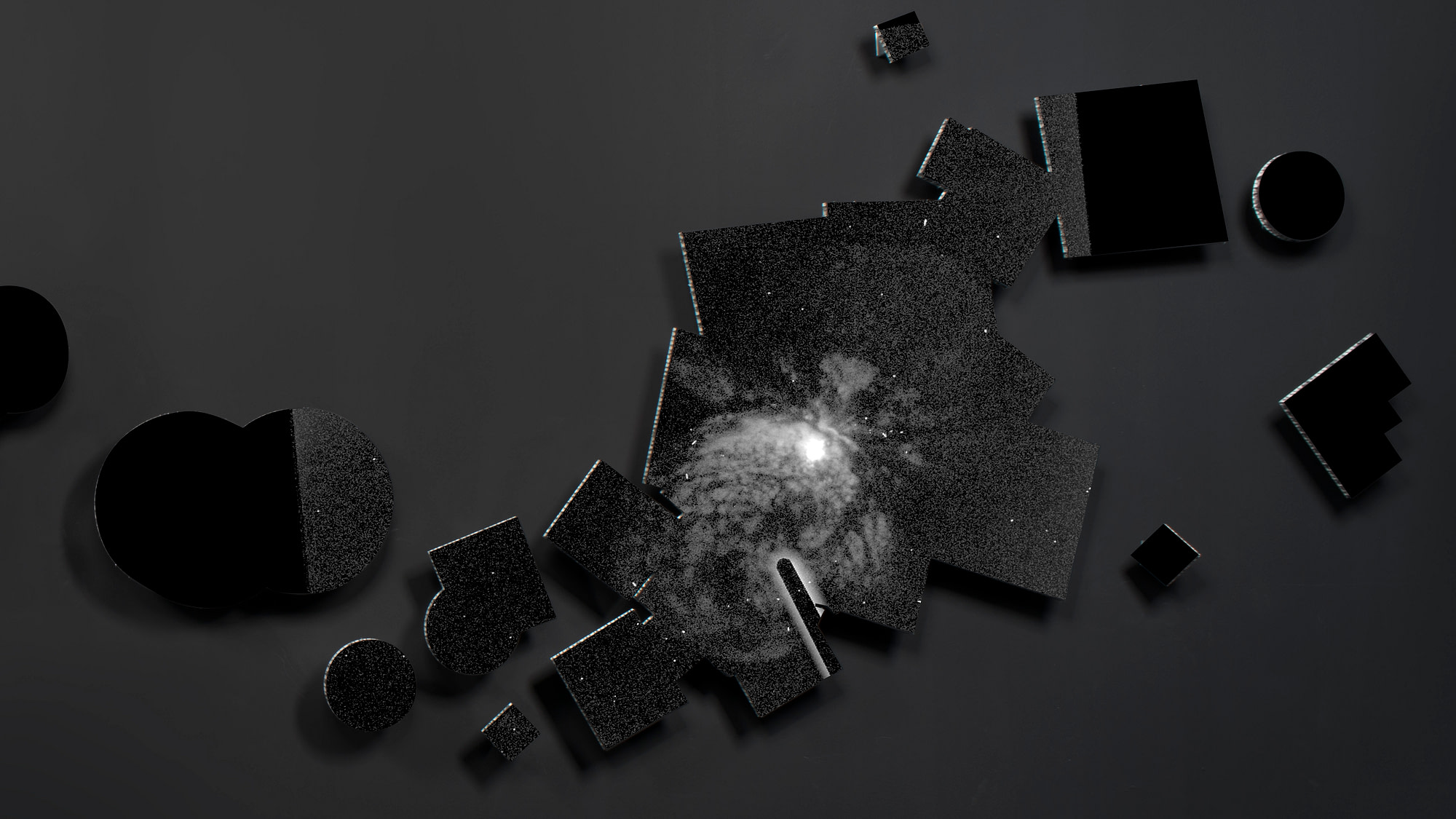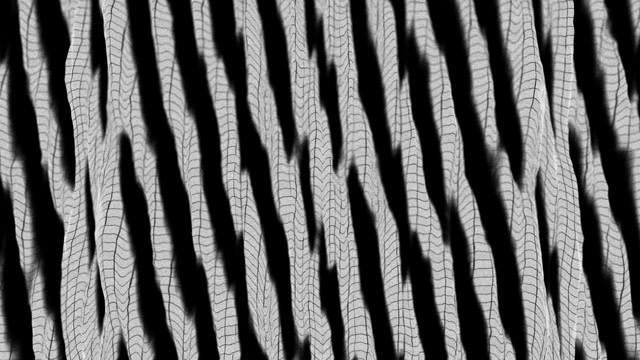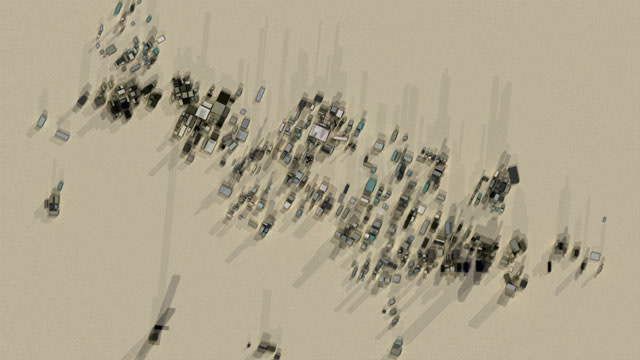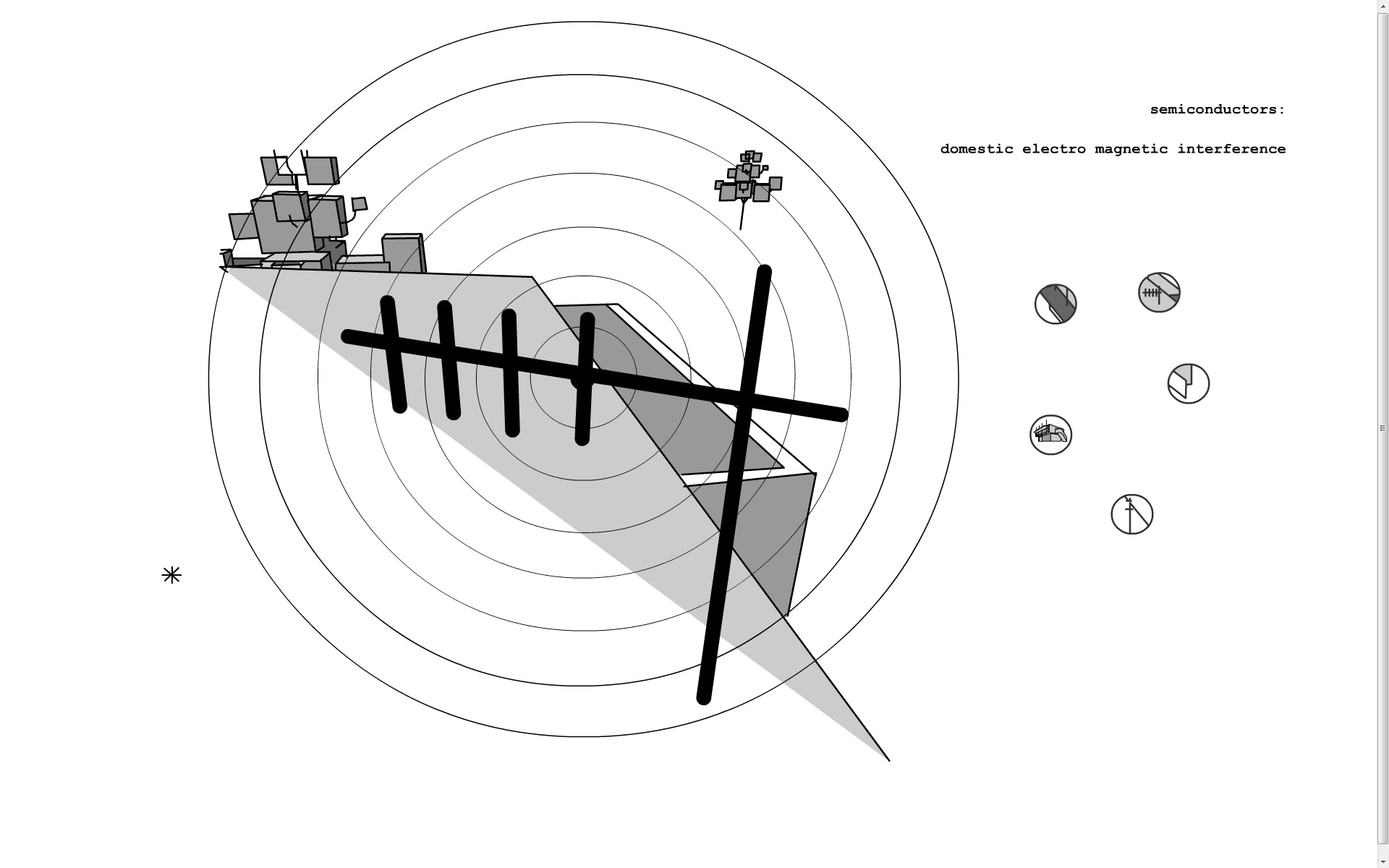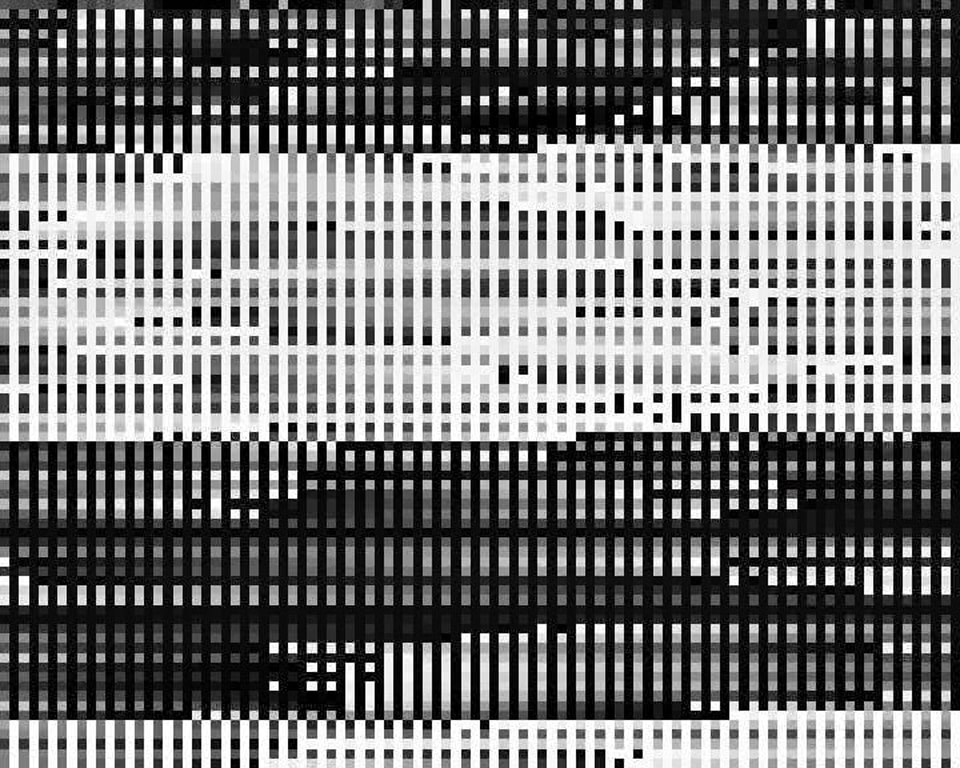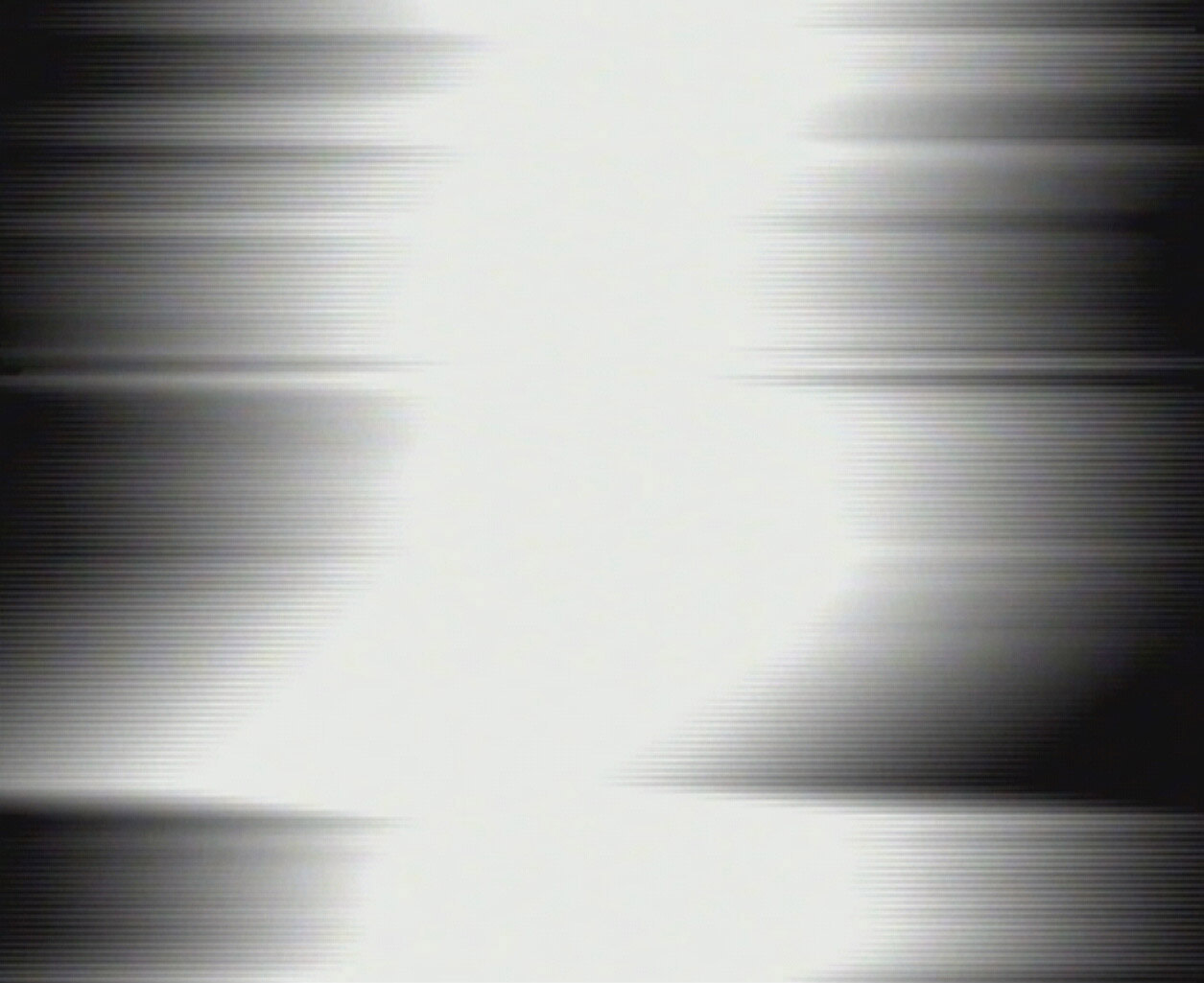2011
05.00 minutes
HD + HD 3D single channel
A Semiconductor work by Ruth Jarman and Joe Gerhardt.
20 Hz is a moving image work by Semiconductor created using data of the Earth’s magnetic field as a geo-magnetic storm occurs in the Earth’s upper atmosphere; we hear tweeting and rumbles caused by incoming solar wind, captured at the frequency of 20 Hertz.
The data used was obtained from CARISMA (Canadian Array for Real-time Investigations of Magnetic Activity), a vast magnetometer network, which covers a large region of North America, from the Canadian Arctic down to Michigan. The devices collect the data from the Earth’s magnetosphere, where interactions occur between particles, magnetic fields and the solar wind. Some of the sounds recorded can be attributed to specific interactions occurring in the Earth’s upper atmosphere; the tweeting noises are a form of magnetic pulsation generated by various instabilities, the deep rumbles are from the high-speed solar wind flowing over the Earth’s magnetic field boundary and causing ripples to form.
To create 20 Hz Semiconductor developed custom programming and 3-D manipulation techniques to simultaneously realise audio and sculptural forms that are born directly from, and animated by, the data. As different frequencies interact both visually and aurally, complex interference patterns emerge, revealing the data as three-dimensional and tangible, like some kind of natural phenomena is playing out before our eyes.
With this work Semiconductor have chosen to reference imagery often employed in scientific visualisations – such as a black & white palette, a shallow depth of field – framing the data by the very tools of knowledge acquisition, drawing attention to a process of observation of natural phenomena itself. With this framing they seek to question how the anthropocentric view of events beyond human reach conditions our everyday experience of the natural world, highlighting the subjective nature of science.
Through this work Semiconductor continue to explore their interest in that which is outside of what is humanly perceivable, confronting the viewer with information which is ordinarily outside of a human scale, both of time and space. Detached from its scientific framework, data becomes a material in its own form, creating a space for reflection upon our relationship to phenomena at the extremities of our perception and positioning the human subject as part of the wider ecosystem of our universe.
Audio Data courtesy of CARISMA, operated by the University of Alberta, funded by the Canadian Space Agency. Special thanks to Andy Kale.
20Hz is co-commissioned by Arts Santa Monica + Lighthouse. Supported by the British Council. Commissioned for the Invisible Fields Exhibition at Arts Santa Monica, Barcelona. 2011-2012.
Awarded the ‘Golden Gate Award for New Visions’ at San Francisco International Film Festival, 2012.
Awarded the ‘Art and Science Award’ at Ann Arbor Film Festival, 2012.
Awarded first prize at Quantum Shorts 2014, Centre for Quantum Technologies, University of Singapore.


